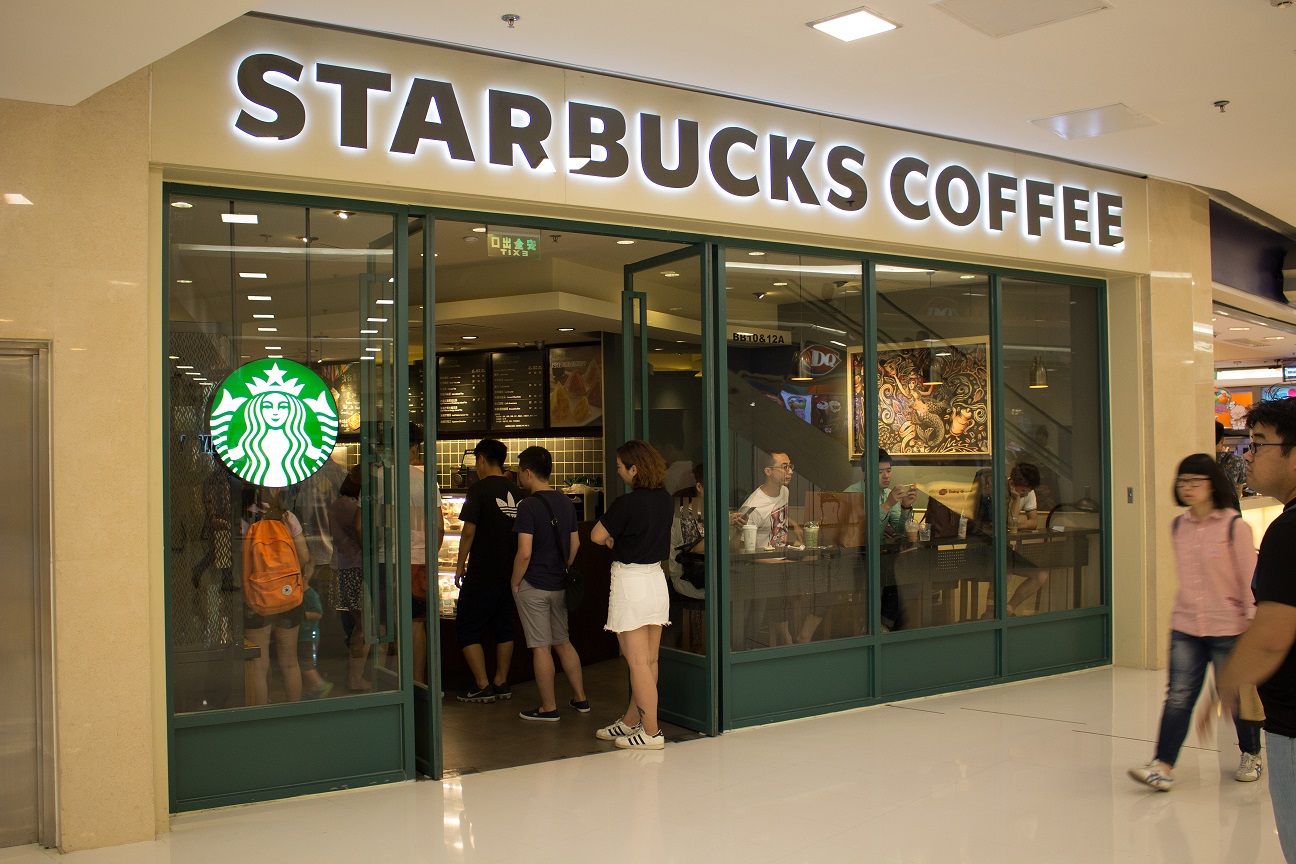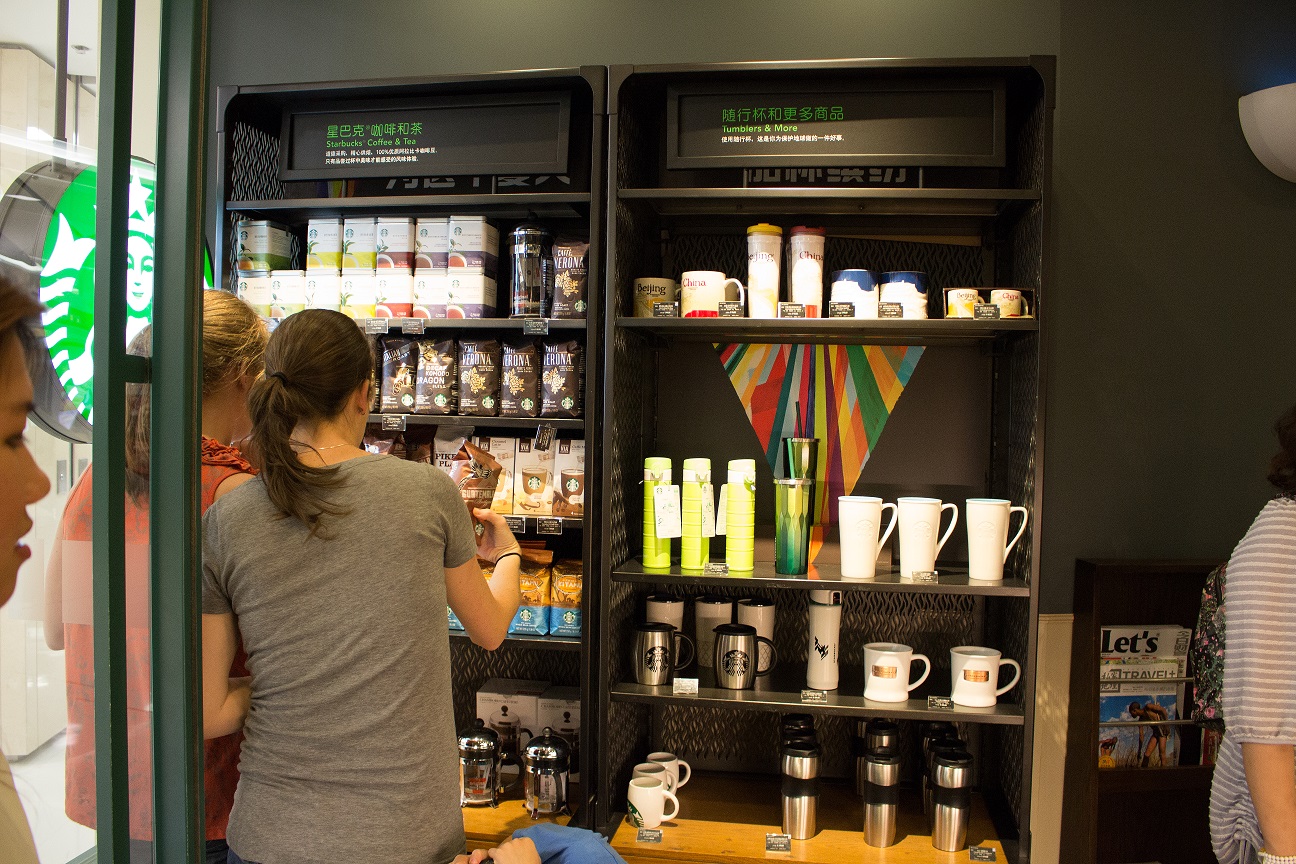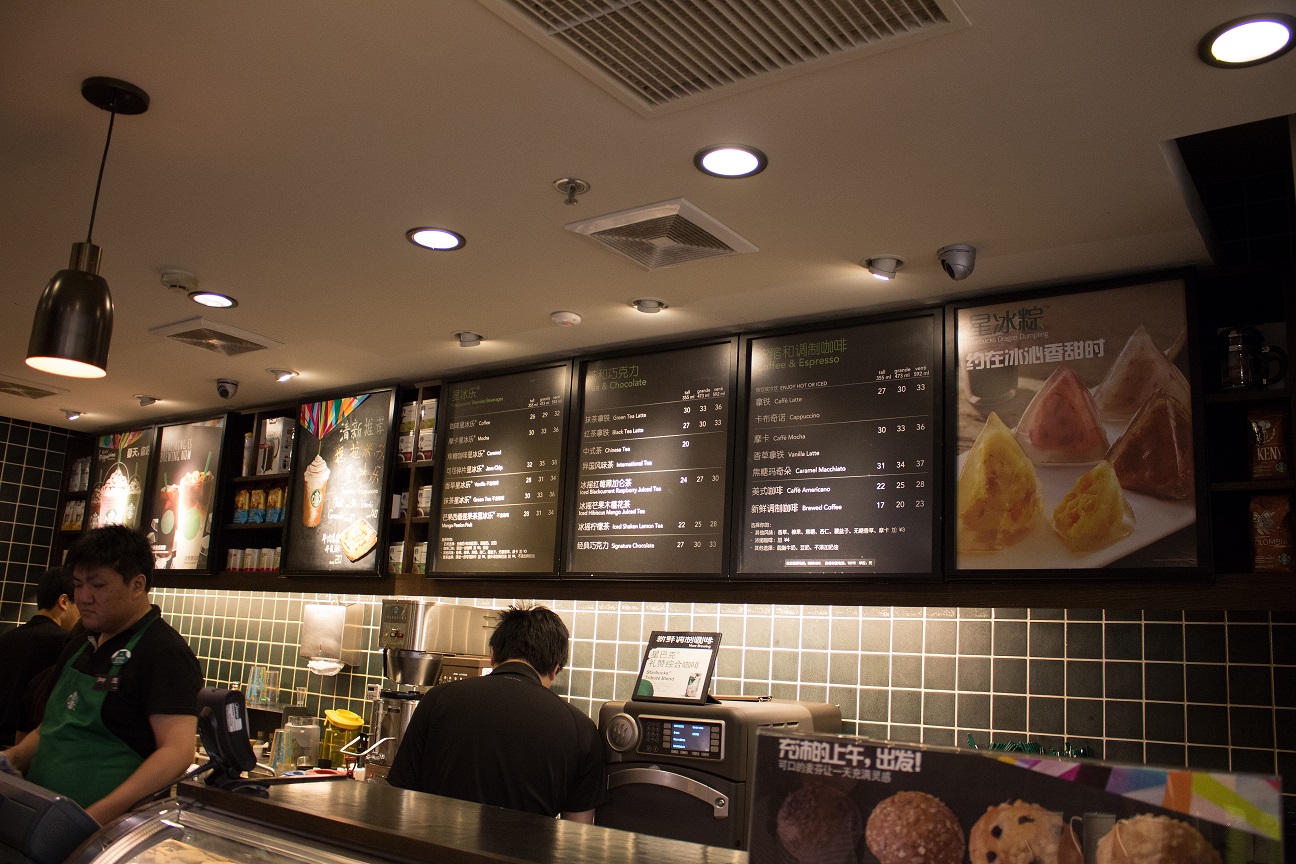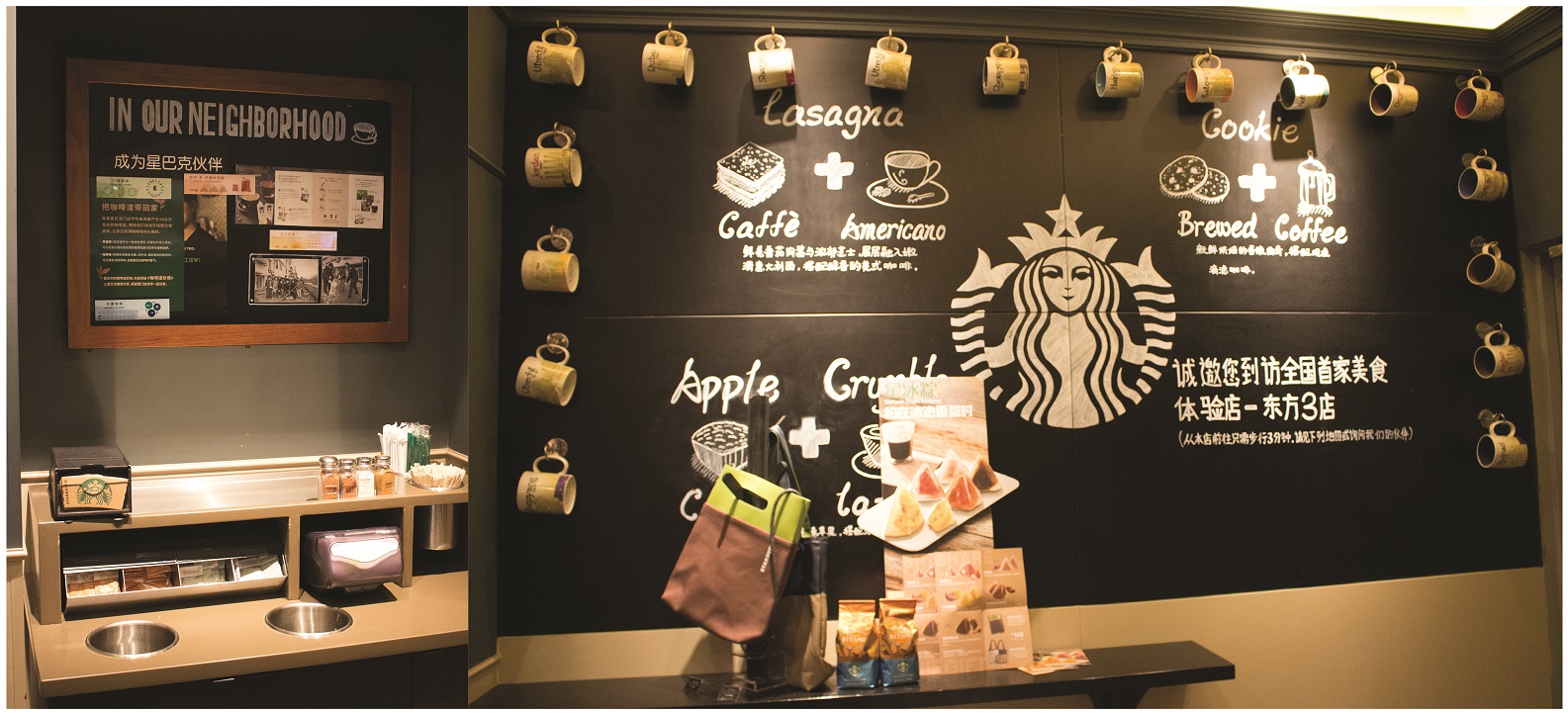Today we have the day off to explore the city by ourselves. However, our professors had an assignment in mind for us. We were to observe and compare how American brands market themselves and operate in China. I chose to examine Starbucks since coffee is not a traditional or cultural beverage in China. I was curious. Would it offer the same products? Would it try to sell more tea-inspired brews in an effort to appeal to its Chinese audience, of which a majority chooses tea for caffeinated drinks? I was about to find out.
After visiting the old CCTV Tower, Van and I headed over to “The Malls at Oriental Plaza.” We quickly found the Starbucks, which was located near one of the entrances. The café was easily recognizable with its famous logo and modern dark green and brown décor. Upon entering, we were welcomed by the familiar scent of coffee and the sound of drinks being made. All the seats were taken and there was a line of eager customers, both foreigners and locals, ready for their afternoon pick-me-up.

One of the first things I noticed was the display of mugs and packaged coffee customers could purchase, which is pretty standard at any Starbucks. However, it also offered a variety of teas and tea makers. While Starbucks does have tea beverages on its menu and boasts a partnership with Teavana, such products are not as common or abundant in its American stores.
The menu is noticeably a lot simpler, with items labeled in both Chinese and English. Notable drinks specific for the Chinese market include “Black Tea Latte,” “Chinese Tea,” and “International Tea.” The “Coffee & Espresso” menu definitely didn’t have as much variety compared to American stores, with “Frappuccino Blended Drinks” and “Tea & Chocolate” taking the other two-thirds of the menu. Another unique product for the Chinese market is the “dragon dumpling,” a frozen dessert that has a filling of shaved ice mixed with coffee, tea, and fruit flavors wrapped in a translucent shell. The prices of the fairly expensive coffee chain also appeared to be slightly higher in China. A venti order was easily $6. A quick search online shows that Starbucks charges up to 20% more for its coffee products in China compared to other markets. The company says the prices are due to the higher costs of doing business in the country.
In this particular Starbucks, the walls had informational bulletin boards that helped educate customers on coffee culture. The store is also bigger with more seating. While Starbucks is often a grab and go shop for Americans, most Chinese customers prefer to sit down and enjoy their beverages. Like tea drinking, the Chinese consume coffee in a more relaxed atmosphere, such as a coffee shop where people can socialize.


